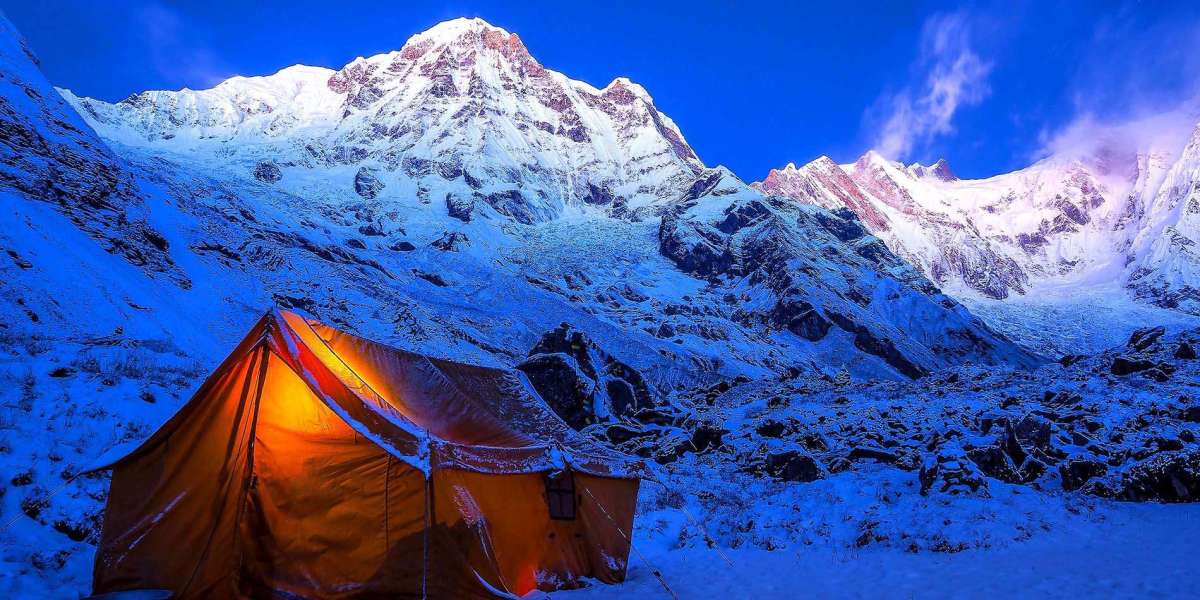Nestled in the heart of the majestic Himalayas, the Annapurna Base Camp Trek is a true feast for trekking enthusiasts. Offering breathtaking views of towering peaks, lush forests, diverse flora and fauna, and the warm hospitality of the local Gurung and Magar communities, this trek is an experience like no other. For adventurers seeking a journey that combines natural beauty, cultural immersion, and physical challenge, the Annapurna Base Camp Trek is a remarkable choice.
The Route to Annapurna Base Camp
The Annapurna Base Camp Trek, also known as the ABC Trek, is one of Nepal's most popular trekking destinations. It typically spans around 10 to 14 days, depending on the chosen route and individual pace. The trek usually begins in Nayapul or Phedi, both of which are accessible by road from Pokhara, a picturesque city known as the gateway to the Annapurna region.
The trek takes you through a series of diverse landscapes, starting with terraced fields and subtropical forests and gradually transitioning to alpine meadows and glacial moraines. Along the way, you'll pass through charming villages like Ghandruk, Chhomrong, and Bamboo, where you can experience the rich local culture and traditions of the Gurung and Magar people.
As you ascend, the terrain becomes more challenging, and the trail meanders through dense rhododendron forests, offering a visual feast of colors during the spring season when these vibrant blooms are in full splendor.
The highlight of the trek is, of course, reaching Annapurna Base Camp itself. Situated at an altitude of 4,130 meters (13,550 feet), the base camp provides trekkers with a 360-degree panoramic view of some of the world's highest peaks, including Annapurna I (8,091 meters), Annapurna South (7,219 meters), Machapuchare (6,993 meters), and Hiunchuli (6,441 meters). The sense of accomplishment and awe-inspiring vistas make the journey more than worthwhile.
Natural Beauty and Biodiversity
The Annapurna region is renowned for its stunning biodiversity. Trekking through the area, you'll encounter a wide range of landscapes, from lush subtropical forests to arid alpine environments. This diversity of ecosystems supports an array of wildlife, including Himalayan tahr, musk deer, langur monkeys, and a plethora of bird species. The rhododendron and bamboo forests are a haven for birdwatchers and nature enthusiasts.
One of the greatest ecological attractions is the Annapurna Sanctuary, a high glacial basin surrounded by towering peaks. This unique environment hosts a range of high-altitude flora and fauna that have adapted to the harsh conditions of the Himalayas. For those with an interest in ecology, the trek provides a glimpse into the intricate web of life in this challenging environment.
Cultural Immersion
Trekking in the Annapurna region is not only about the natural beauty but also about cultural immersion. The villages along the trekking route are inhabited by Gurung and Magar communities, known for their warm hospitality and rich cultural heritage. As you pass through these villages, you'll have the opportunity to interact with the locals, learn about their traditions, and even participate in traditional rituals and dances if you time your visit with a local festival.
Teahouses and lodges run by local families provide trekkers with comfortable accommodations and delicious Nepali meals. This aspect of the trek is an excellent opportunity to experience the warmth and friendliness of the local people, making the journey not just about physical challenge but also about forging connections with the communities along the way.
Trekking Season and Tips
The best time to undertake the Annapurna Base Camp Trek is during the autumn (September to November) and spring (March to May) seasons when the weather is relatively stable, and the views are at their most spectacular. However, the trek can be done year-round, and each season has its unique charm.
Here are some essential tips for those considering the Annapurna Base Camp Trek:
- Prepare physically: While the trek doesn't require technical climbing skills, a good level of fitness is essential, especially as you ascend to higher altitudes.
- Pack wisely: Bring appropriate clothing for various weather conditions, including layers, waterproof gear, and good quality trekking boots.
- Acclimatize properly: Take your time to acclimatize at higher elevations, as altitude sickness can be a concern. Stay hydrated and listen to your body.
- Permits: Obtain the necessary permits, such as the Annapurna Conservation Area Permit and the Trekkers' Information Management System (TIMS) card.
- Guides and porters: While the trek can be done independently, hiring a local guide and porter can enhance your experience by providing local knowledge and reducing the physical burden.
Conclusion
The Annapurna Base Camp Trek offers a feast for the senses, combining awe-inspiring natural beauty with cultural immersion. This journey into the heart of the Himalayas provides a rich tapestry of experiences that leave trekkers with lasting memories and a profound sense of accomplishment. Whether you're an experienced trekker or a novice, this trek has something for everyone, making it a must-do for anyone seeking an adventure that truly feeds the soul.



